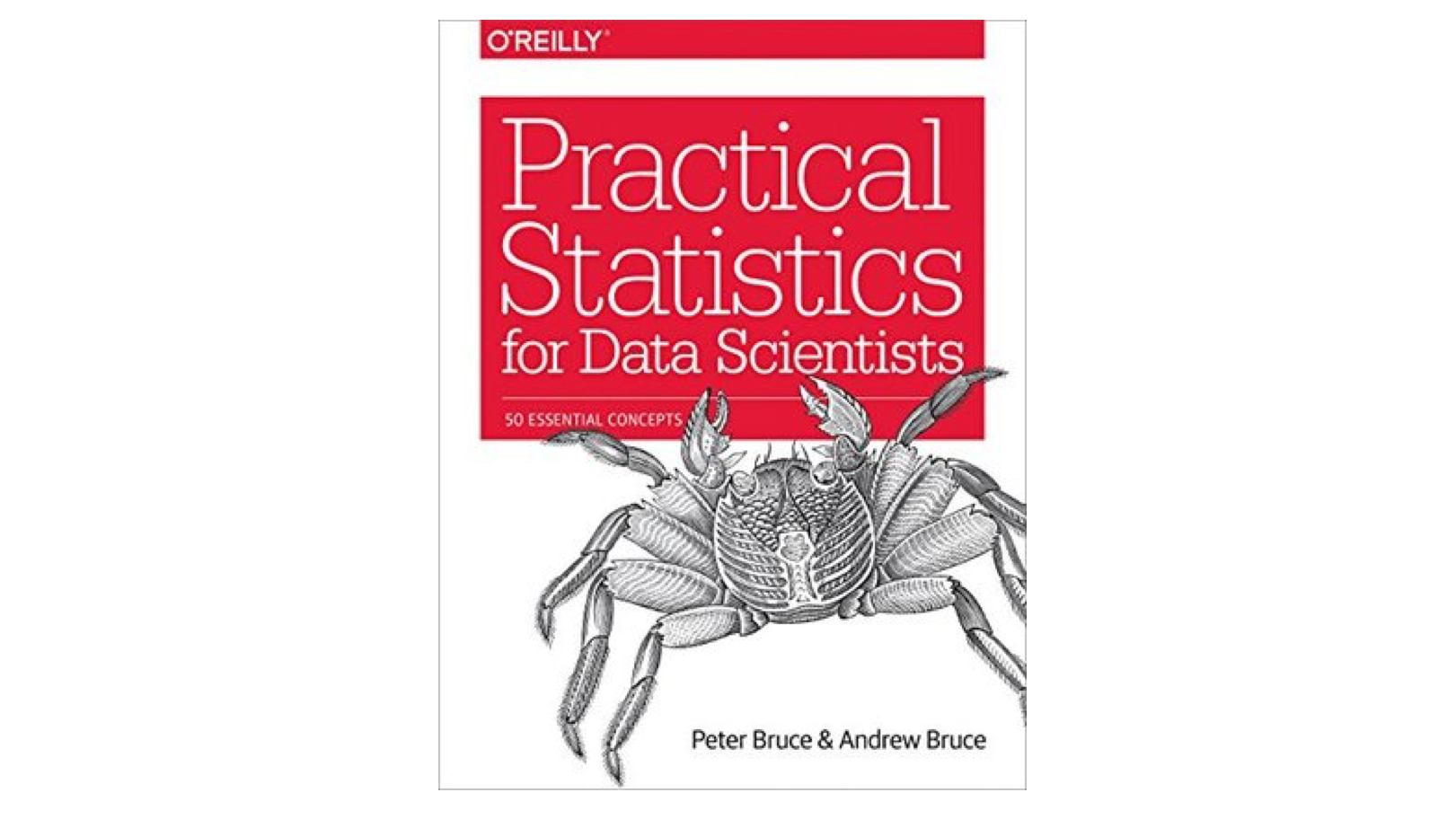Practical Statistics for Data Scientists
March 26 2020

A second edition, *Practical Statistics for Data Scientists: 50+ Essential Concepts Using R and Python* is scheduled for publication on June 9, 2020.
Who is this book for?
According to the preface:
"This book is aimed at the data scientist with some familiarity with the R programming language, and with some prior (perhaps spotty or ephemeral) exposure to statistics."
"Two goals underlie this book:
1) to lay out, in digestible, navigable, and easily referenced form, key concepts from statistics that are relevant to data science, and
2) to explain which concepts are important and useful from a data science perspective, which are less so, and why."
Book outline
1. Exploratory Data Analysis
Elements of Structured DataRectangular Data
Estimates of Location
Estimates of Variability
Exploring the Data Distribution
Exploring Binary and Categorical Data
Correlation
Exploring Two or More Variables
Summary
2. Data and Sampling Distributions
Random Sampling and Sample BiasSelection Bias
Sampling Distribution of a Statistic
The Bootstrap
Confidence Intervals
Normal Distribution
Long-Tailed Distributions
Student’s t-Distribution
Binomial Distribution
Poisson and Related Distributions
Summary
3. Statistical Experiments and Significance Testing
A/B Testing [March 23, 2020]Hypothesis Tests [March 25, 2020]
Resampling [March 26, 2020]
Statistical Significance and P-values
t-Tests
Multiple Testing
Degrees of Freedom
ANOVA
Chi-Square Test
Multi-Arm Bandit Algorithm
Power and Sample Size
Summary
4. Regression and Prediction
Simple Linear RegressionMultiple Linear Regression
Prediction Using Regression
Factor Variables in Regression
Interpreting the Regression Equation
Testing the Assumptions: Regression Diagnostics
Polynomial and Spline Regression
Summary
5. Classification
Naive BayesDiscriminant Analysis
Logistic Regression
Evaluating Classification Models
Strategies for Imbalanced Data
Summary
6. Statistical Machine Learning
K-Nearest NeighboursTree Models
Bagging and the Random Forest
Boosting
Summary
7. Unsupervised Learning
Principal Components AnalysisK-Means Clustering
Hierarchical Clustering
Model-Based Clustering
Scaling and Categorical Variables
Summary
Impressions
Strengths
Book is divided up into fairly bite-sized concepts, which provide useful chunks to guide learning
Weaknesses
The amount of equations included in the text can interrupt flow and be confusing to readers without a significant statistics background